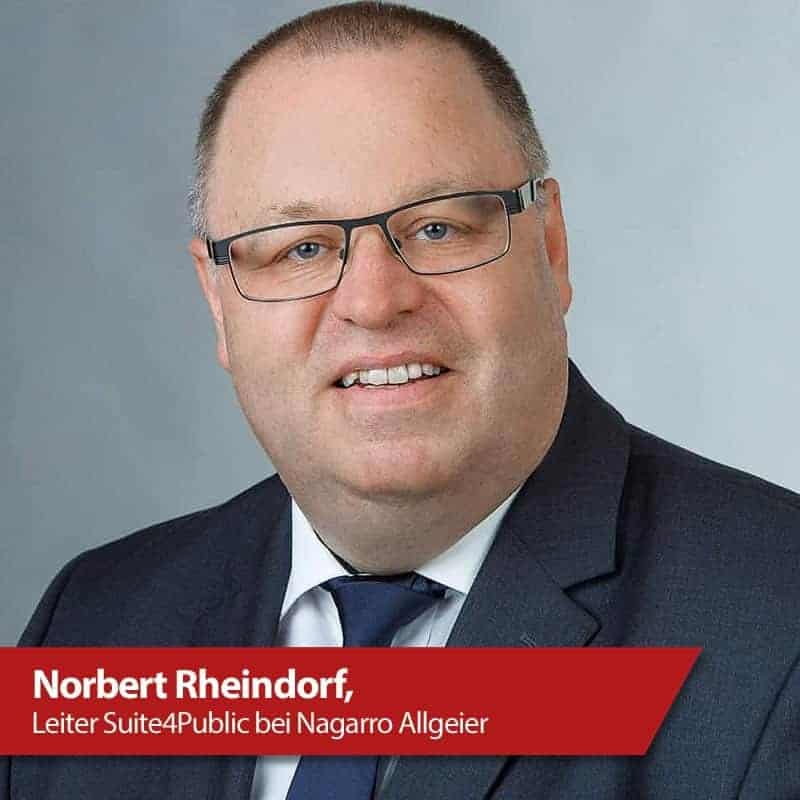![[shutterstock.com: 764416402, GeoArt]](https://e3mag.com/wp-content/uploads/2020/08/shutterstock_764416402.jpg)

We can work on our projects from the comfort of our home office, order books, clothes and even groceries while lying on the sofa, and have access to vast quantities of movies, series and music. In principle, numerous interactions between people and companies on the one hand and municipalities on the other could also be handled digitally from a distance.
However, the e-government options - i.e., the services offered by public authorities and public institutions that can be used via the Internet - have so far been rather limited. And their use is also rather below average.
Online access law to drive digitization forward
The EU's Digital Economy and Society Index (DESI) gives an initial indication of how much catching up Germany needs to do. In the DESI Report 2019, Germany ranks at the bottom in the area of digital public services overall and in the individual aspects. A more detailed picture of the situation is provided by the "eGovernment Monitor," which Initiative D21 has been publishing since 2011 (now together with the Fortiss research institute).
In the 2019 Monitor, only 48 percent of respondents in Germany said they had used an e-government service in the past twelve months (up 8 percent year-on-year; 2012: 45 percent). In Austria, the figure was 70 percent (down 4 percent year on year; 2012: 68 percent) and in Switzerland, 58 percent (up 3 percent year on year; 2012: 58 percent).
In all three countries, the search for information on the websites of local authorities is dominant. In contrast, hardly any certificates of good conduct are applied for online or certificates are ordered. The biggest obstacles from the point of view of the people in Germany are that the required service is not offered (45 percent), the acquisition of additional hardware is necessary (44 percent) and the structure of the offers is not transparent (43 percent).
The Online Access Act (OZG), which was enacted in 2017 and has been in force since then, is intended to bring more movement to what has been a more or less stagnant situation for years. The federal, state and local governments are obliged to offer their administrative services digitally via administrative portals by the end of 2022. The law is given concrete form by the OZG implementation catalog drawn up by the IT Planning Council, a body set up by the federal and state governments. It defines 575 administrative services in 14 subject areas.

Administrative barriers
However, the topic has apparently not quite caught on, especially in the municipalities. This can be concluded from a survey conducted by the consulting firm BearingPoint. After all, 42 percent of the administrative staff surveyed rate the importance of the OZG for the citizen-friendly design of their municipality as "rather low" or "low". 39 percent say that the extent to which their municipality is dedicated to implementing the OZG is "rather low" or "low."
And this is despite the fact that there are still a number of to-dos on the agenda. For 81 percent of those surveyed, adapting existing processes and organizations is one of the biggest challenges, for 45 percent it is the budget, and for 42 percent each, employee motivation and the availability of IT solutions and IT infrastructure are among the main obstacles.
Added to this: Only 16 percent of the municipalities believe that their current IT service provider is well positioned to implement the OZG, 61 percent only partially agree, and 23 percent disagree.
Even though there are still about two and a half years to go before the deadline specified in the law, the current assessments are not really encouraging. And this does not even take into account the fact that the OZG focuses exclusively on the interfaces to people and companies. How they are to be integrated into the systems of the authorities and public institutions remains an open question.
However, the strategic and operational integration of backend and frontend is essential to establish a digital end-to-end process that actually contributes to greater effectiveness and efficiency for all parties involved. Given the already considerable task for municipalities, this holistic approach may initially sound like an additional burden that no one likes to take on. In our view, however, it is the only sensible approach. And in many cases, it does not mean significantly more work.
SAP as a foundation
In our experience, two factors are critical to success if end-to-end processes are to be created without media discontinuities: The individual departments and units must be willing to work together. And they must jointly question all established structures, processes and systems.
Only when this happens can a future-proof architecture be developed. Incidentally, this does not mean that the entire system landscape has to be implemented by the end of 2022. However, with the goal in mind, the individual steps can be sensibly planned in a roadmap. Technological necessities and legal requirements can then be mapped in equal measure.
In the best case, the technological foundation of such an architecture is an ERP system geared to municipal requirements. In concrete terms, this means that the system should map the specific processes and legal requirements of public authorities and public institutions and make it easy to integrate any necessary applications for specialized procedures and flexibly create external interfaces.
This means that the ERP system must fulfill criteria that ERP systems oriented to companies do not necessarily cover. In our opinion, Suite 7 and S/4 with Public Sector Collection and Disbursement (PSCD) as a module tailored to public administration for cash and revenue management do this.
Online Access Act
SAP solutions can be specifically supplemented by applications from partners - especially in the area of specialist procedures for financially effective processes. The reason for this is the highly differentiated requirements: These differ not only from state to state, but in federal systems such as Germany also from state to state or even from municipality to municipality. In order to map processes in public administration consistently and without media discontinuities, it is possible to use applications provided by SAP partners that close the gaps in a targeted manner.
For example, our Suite4Public solution. This supplements SAP PSCD with the Doppik sample solution not only with functions for cash and revenue management, but also with specialized procedures or municipal applications for the areas of "property taxes", "trade tax", "dog tax", "other recurring revenues", "enforcement" and critical processes.
From a technological point of view, specialized processes such as those in our Suite4-Public for financial processes are the integration point for external e-government offerings: The owner then enters all the details of a new dog online - in a form, for example. From there, the data is automatically transferred to the specialized procedure, where it is processed.
The feedback to the owner, together with the taxes to be paid, then takes place online again. The trick in all this is to orchestrate the very heterogeneous situation. In our view, it makes sense to start by becoming aware of the four steps in the overall process: Input, data transfer, further processing and output. Input and output are directly affected by the OZG, while data transmission and further processing are more indirectly affected.
For all four steps, it is possible to identify how they have been mapped to date or how they are to be mapped in the future. For example, different providers offer different form or portal solutions for implementing the aspects relevant to the OZG.
However, none of these solutions covers all 575 administrative services. Some of the data transfer and processing is still done manually or with the help of office tools. If dedicated IT solutions are used, the individual departments and units select them according to their own ideas.
In this respect, municipalities should relate their different non-technological and technological approaches to each other along the four steps of the overall process. This makes it clear where media discontinuities exist and where interfaces can possibly be realized.
Municipalities that use SAP as their core can then gradually set about replacing individual parts of the architecture with SAP-based components. Realistically, this will not be possible across the board at the moment. However, a consistent orientation toward SAP will lead step by step to a truly innovative municipality that offers the best possible service to local people and businesses.






